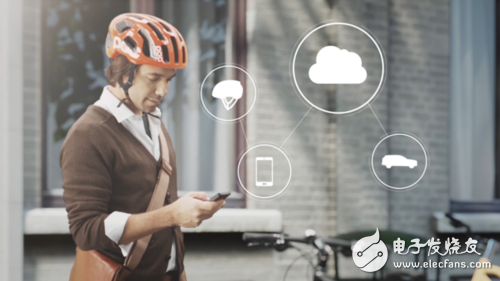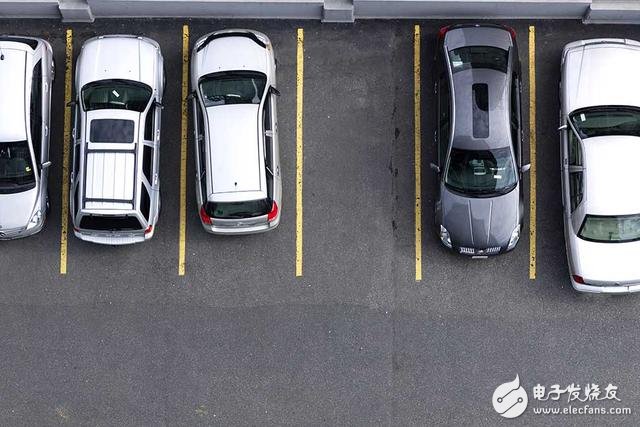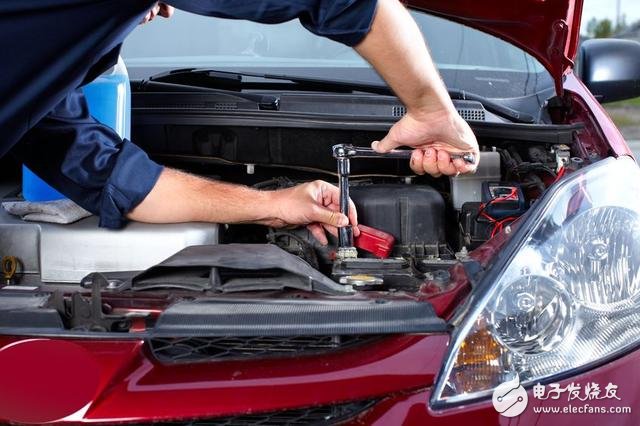How to make the car safer and more convenient
The Internet of Vehicles has become another area of ​​concern after wearables and smart homes. Many technology giants, Internet companies and even traditional car companies have begun research and development of car networking services, and have begun on some new models. Use put into use. In fact, in-vehicle systems like Apple CarPlay, Google Android Auto, and the platforms of major automakers are just a platform for the Internet to provide services for us. In addition to the platform, many terminals and data servers are also the Internet of Vehicles. A factor that plays an important role. When our car can send or receive data, and this data can really help us, the Internet of Vehicles has a real meaning. Otherwise, just listen to online music and use map navigation. This is no real difference from traditional in-vehicle systems. Even these tasks can be accomplished with just a smartphone. Inform other vehicles in case of dangerous road conditions Volvo is now one of the most enthusiastic traditional car manufacturers for the Internet of Vehicles technology, and as the brand that has always valued safety the most, Volvo is also the first to apply the Internet of Vehicles technology to the security field. At the beginning of this year, Volvo announced a new safety system that can send warnings to other nearby cars through the data monitored by one car, allowing more drivers to avoid dangerous roads ahead or to detour. When the car acquires information from the road through sensors built into the wheels and then transmits the data to the server via GPS positioning technology, the server continues to send the data to nearby cars equipped with the system. When the vehicle detects a dangerous road ahead, a clear icon appears on the dashboard, and the icon becomes larger as the car gets closer to the danger zone. At the same time, the system is also connected to the car's hazard warning lights, and the car will conduct a self-test when prompted. At the same time, the system will also send signals to all nearby cars equipped with the system. Connectable bicycle helmet Also a safe car networking technology from Volvo, this time Volvo aims to target bicycles in vulnerable groups in traffic accidents. Volvo has added a specially developed smart bicycle helmet to the car networking platform. The car can send a signal to the helmet or receive a signal from the helmet so that both the driver and the rider can know that the other party is approaching. If the collision is about to happen, the safety system and safety helmet inside the car will pass the data to the cloud and warn both parties in time. At this time, the driver will be able to see the warning message from the head-up display inside the car, and at the same time be safe. The indicator light on the helmet will also illuminate to alert the rider. Universal V2V car networking technology GM has now begun to take the lead in the layout of the Internet of Vehicles, and is divided into V2V cars and V2I cars connected to the infrastructure. When V2V is connected, when two Buick cars equipped with this technology meet, they can judge each other's position, and they are located on the auxiliary road or the secondary road, and the vehicles with slower speed will brake actively, thus eliminating the need. The driver’s line of sight was blocked and there was no way to get on both sides. Compared with the traditional way of installing cameras and sensors on the car, the car network has a wider range when it is safe to drive. It can be pre-judged 300 to 500 meters ahead of time, which is wider than the range that the camera can detect. . In addition to the automatic braking of the side-by-side car, if the front car has a double flash alarm or a dangerous situation such as sudden braking, all vehicles behind the lane will be notified, and the distance will be too close or even automatically brake. In addition, when there is a car at a high speed in the adjacent lane, the driver will also receive an in-vehicle prompt. In addition, in the V2I connection, for example, if the car can be connected to the traffic lights, even if the driver does not see the traffic lights, the screen inside the car can know whether the next intersection to pass is a red light or a green light. And if you try to red light, the vehicle will automatically stop without hesitation to avoid traffic accidents. Predicting signal time in advance is more fuel efficient If we can grasp the situation of all the signal lights on the road in advance, it will not only save us a lot of time, but also better let the car automatically judge the start and stop time of the engine to save fuel. Recently, BMW and Connected Signals jointly developed an application called EnLighten, which allows owners to know the specific number of seconds of traffic lights at various intersections on city roads, helping to save time and route planning, intelligence. Travel. When users use this app, they only need to connect the phone to BMW's BMW App app, and they can see the color of each signal on the road in the car's dashboard. The app can use the data from the local TMC to see the real-time status of traffic lights at various intersections. For example, if you are waiting for a red light, this app can directly display the number of seconds required to turn green, and send out relevant instructions and voices, so you can pre-determine the time to start the vehicle and save fuel and improve efficiency. The application of predictive red light technology is not limited to changing the driving habits of users. When the car can get data on when the red light turns green, it can make better decisions on engine start/stop, regenerative braking, and even engine output. Connected parking lot database I think everyone has this experience. Every time I want to drive to the city center, the most troublesome thing is that I can't find a parking lot. In many downtown or business districts, finding a parking lot is a very painful thing, and sometimes we have to go half an hour to barely find a parking space. In the United States, more and more parking lots are beginning to provide real-time parking spaces and billing data to specialized parking applications, which can bring greater convenience to customers. The owners can check the number of remaining parking spaces in each parking lot through a special car application, and choose the most suitable parking lot parking according to their own situation. In addition, there are some shopping malls and applications to cooperate, so that users only need to use mobile phones to renew the parking, so that the user experience of shopping to the extreme. Driving and shopping In addition to the field of driving safety, the Internet of Vehicles is now on the tide of mobile payments. At the recent World Mobile Congress Shanghai, Visa brought the concept of mobile car business. When we send the location of the car to the store, we can pay in advance, then arrive at the store and take the goods directly. This not only eliminates the trouble of queuing, saves a lot of time, and does not have to look for parking spaces everywhere. The use of in-vehicle payment is actually achieved through the Visa Checkout service platform. We only need to pay by the virtual buttons or voice commands on the car, without having to pull out the credit card or wallet. Integrate logistics, insurance and after-sales service information At present, some mid- to high-end models already have the self-checking function of the car, and the car networking service can send these self-test data to the database of the repair service center or insurance company. As long as the car has an accident or failure, the insurance company or the repair center can receive the data in the first time, and then carry out the risk or road rescue according to the actual situation. In addition, including online customer service, dynamic car condition detection, etc. can be opened with the database of the maintenance service center, leading the user to maintain the vehicle in time. Intelligent navigation As one of the most developed countries in the Internet of Vehicles, Japan is also in a leading position in the field of car networking. For example, although Japan can push real-time road information through special devices on high-speed and trunk roads, it can only rely on static information on the map on the branch roads that usually have no roadside devices. The car network can receive the implementation of dynamic data to the car clock. Even on the feeder road, the road traffic information pushed through the information center can achieve the same effect of high-speed and trunk roads, greatly expanding the road range of intelligent traffic. . In addition to smart navigation, there are many very unique car networking services in Japan. For example, according to the location information, the newly opened road is automatically drawn on the map, and the accident-prone area is identified according to the statistical data of the sudden braking and the user is reminded by voice. As the most potential emerging market, the Internet of Vehicles has become the best platform for major technology companies, traditional car manufacturers and even government departments to provide services. In the future, how to use the data to transfer between infrastructure and vehicles will become the most important service in the entire automotive field. Featured by its wide flat surface with top bend, T16 generates lighting with astonishing uniformity, covers all the colors we offer and all functions. All types of IP68 mold injection connectors and DIY connectors are also available for this size. This size can be widely designed for façade lighting, pool lighting, architecture lighting design and etc. Cute Neon Lights,Color Changing Led Neon Rope Light,Led Neon Wall Lights,Flexible Neon Rope Tes Lighting Co,.Ltd. , https://www.neonflexlight.com







